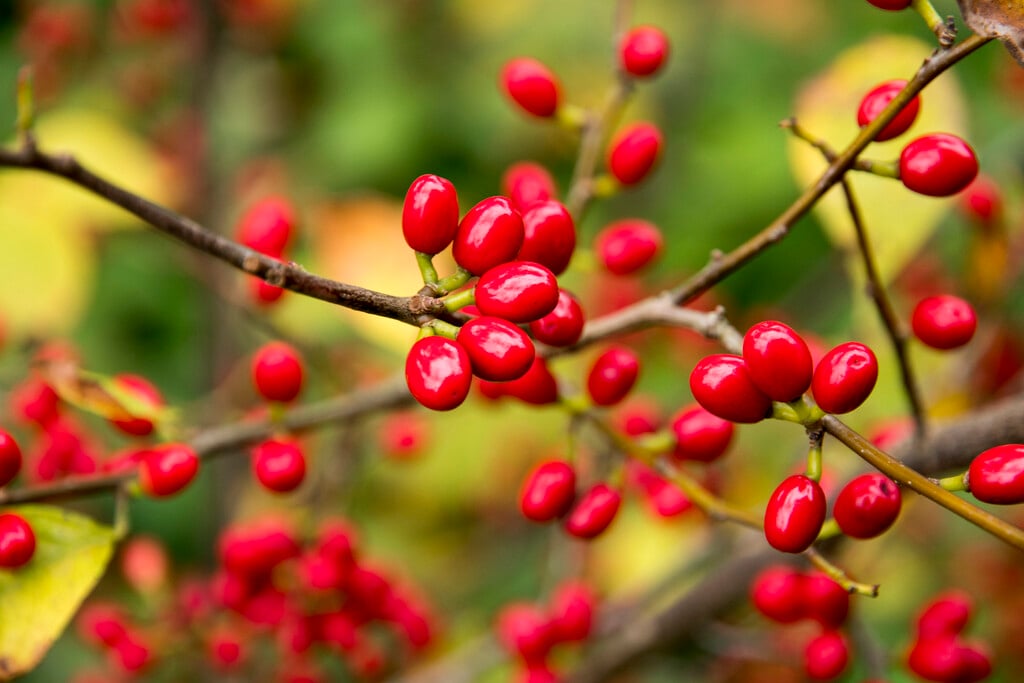Lindera benzoin
spice bush
A deciduous, rounded shrub to a height of 3m, with upright branches and aromatic oval-shaped dark green leaves that turn yellow in autumn. Tiny star-shaped yellow flowers appear in spring, followed by red berries on female plants
Synonyms
Benzoin odoriferumBenzoin aestivale
Size
Ultimate height
2.5–4 metresTime to ultimate height
5–10 yearsUltimate spread
2.5–4 metresGrowing conditions
Moisture
Moist but well–drainedpH
AcidColour & scent
| Stem | Flower | Foliage | Fruit | |
| Spring | Yellow | Green | ||
|---|---|---|---|---|
| Summer | Green | |||
| Autumn | Yellow | Red | ||
| Winter |
Position
- Partial shade
Aspect
East–facing or North–facing or West–facing
Exposure
Sheltered Hardiness
H6Botanical details
- Family
- Lauraceae
- Native to GB / Ireland
- No
- Foliage
- Deciduous
- Habit
- Bushy
- Genus
Lindera can be deciduous or evergreen trees or shrubs with aromatic leaves and small star-shaped dioecious flowers in axillary umbels in spring followed, on pollinated female plants, by glossy berries
- Name status
Correct
How to grow
Cultivation
Grow in moist, but well-drained acidic soil in partial shade
Propagation
Propagate by greenwood cuttings in early summer or sow seed in a coldframe/sheltered place in autumn
Suggested planting locations and garden types
- Cottage and informal garden
- Low Maintenance
- Flower borders and beds
- Wall side borders
Pruning
Pests
Generally pest-free
Diseases
Generally disease-free
Get involved
The Royal Horticultural Society is the UK’s leading gardening charity. We aim to enrich everyone’s life through plants, and make the UK a greener and more beautiful place.
